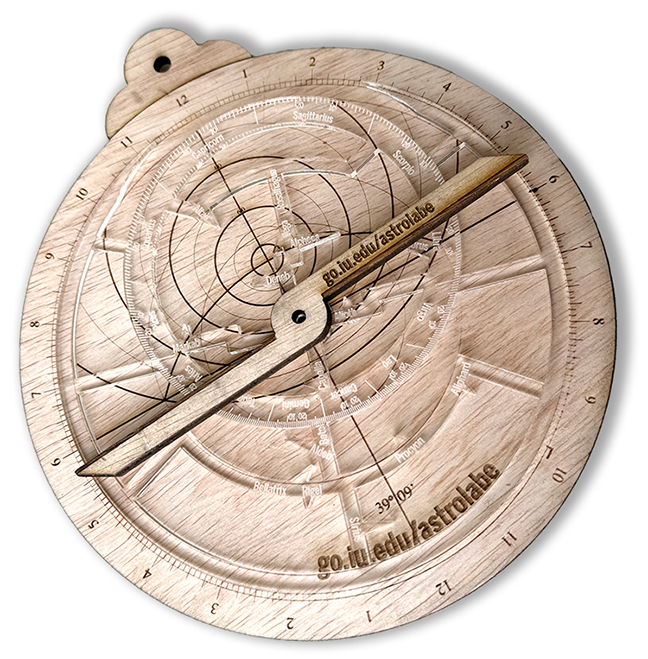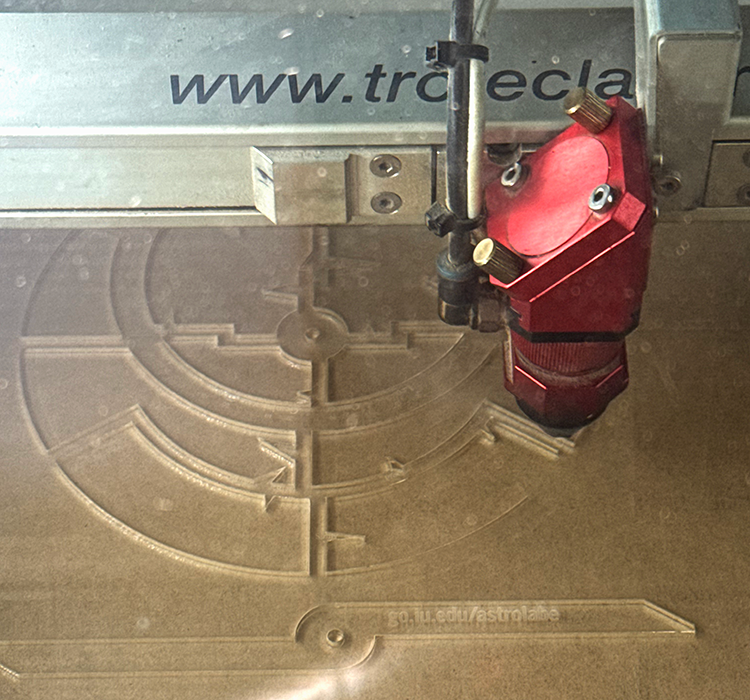What is an Astrolabe and why does it matter?
People needed clocks and navigation well before the smartphone. Enter the astrolabe!
The astrolabe was popular throughout the Middle Ages for measuring and calculating dates, times, latitudes and the position of the stars in the sky. It saw heavy use for calculating the time of day and performing basic navigation in the Islamic world starting in the 6th century. By the 11th century, it was in common use in the Byzantine Empire and, by way of Al'Andalus (Islamic Spain), had been imported into medieval Western Europe.
- The mater ("mother" in Latin) is the base of the astrolabe. It's a large circle with hours of the day around the outside edge on the front, and the zodiac and months on the outside edge on the back.
- The plate. In our demo kit, we combined the plate and the mother. The plate is a customized insert of horizon and angle details that are specific to the latitude at which you're using the astrolabe.
- The rete ("net" in Latin) is a complex overlay for the plate that points out the location of specific stars and shows the user the sun's path in the sky.
- The rule (front) and alidade (back) are the two smaller pointers that rotate on the plate and mater to help users measure the angle of the sun, stars, or object being measured.





